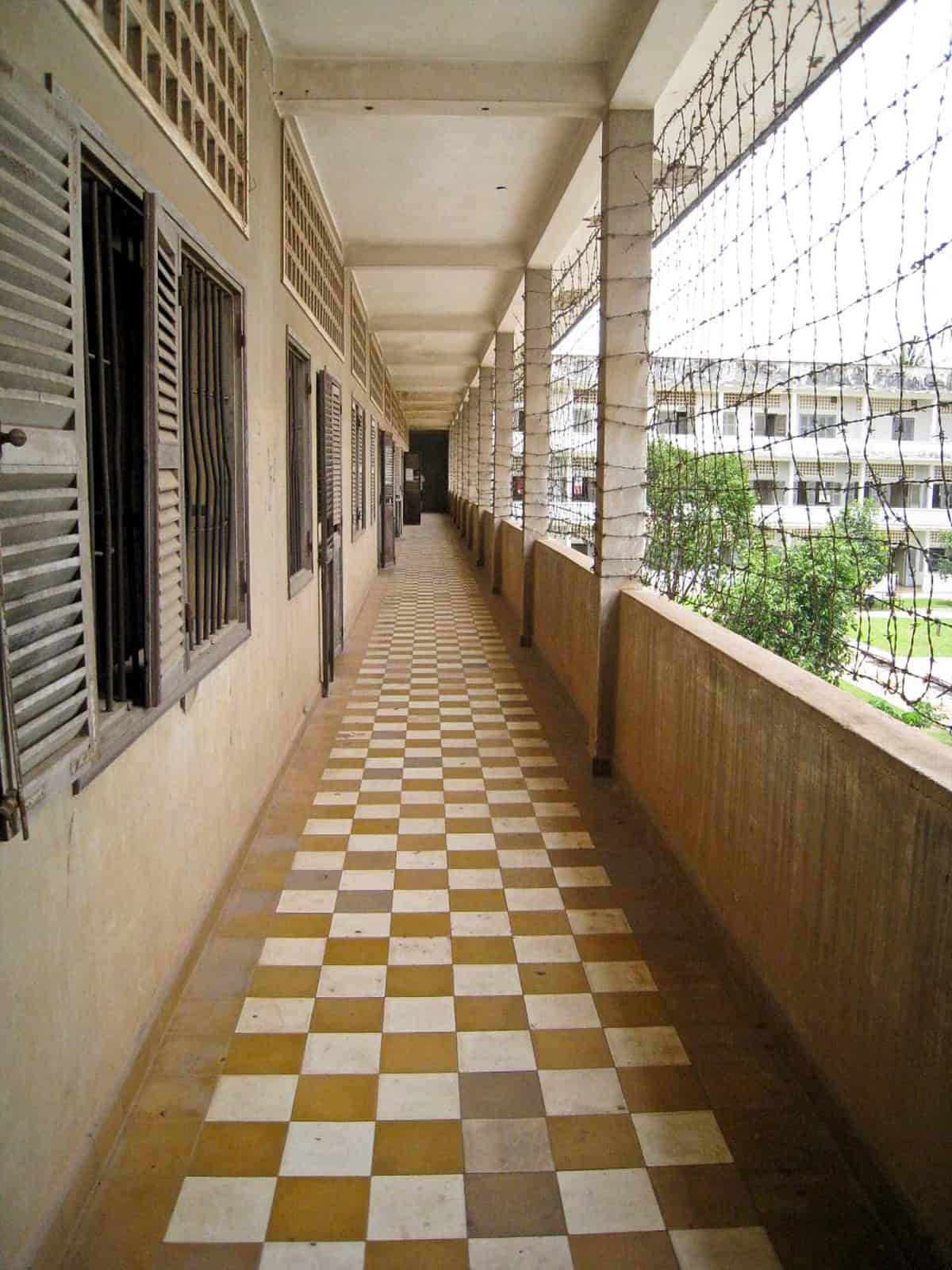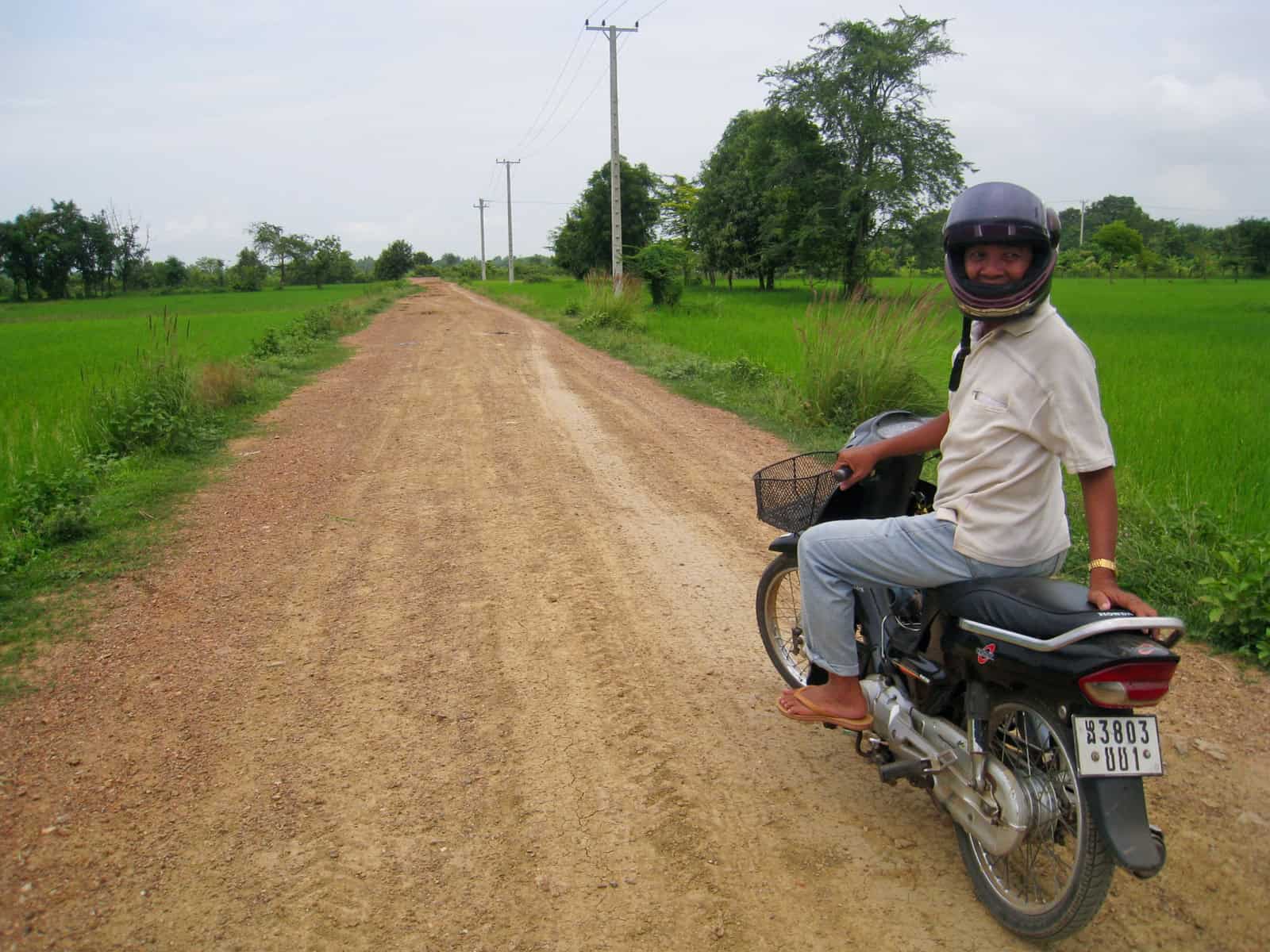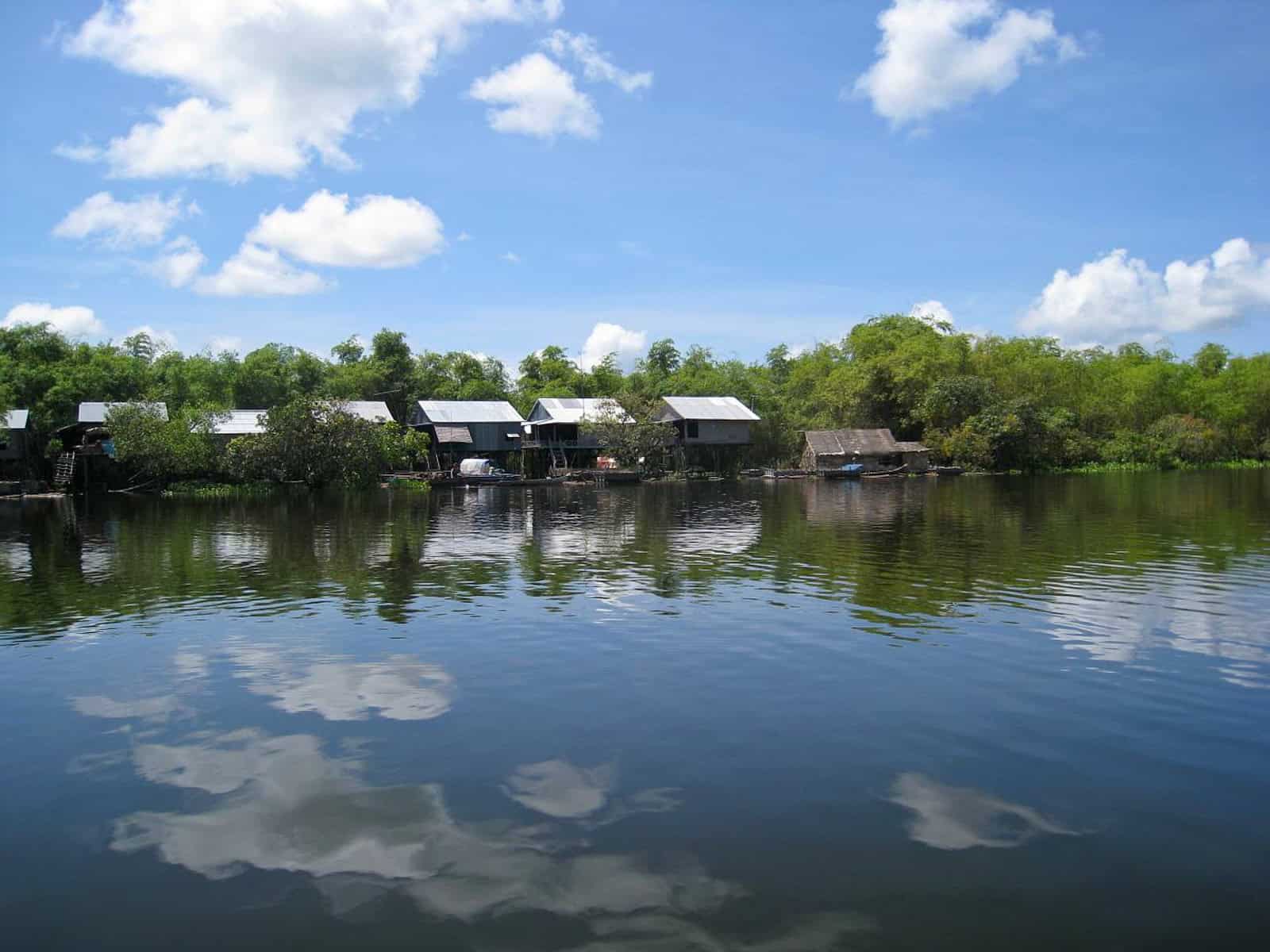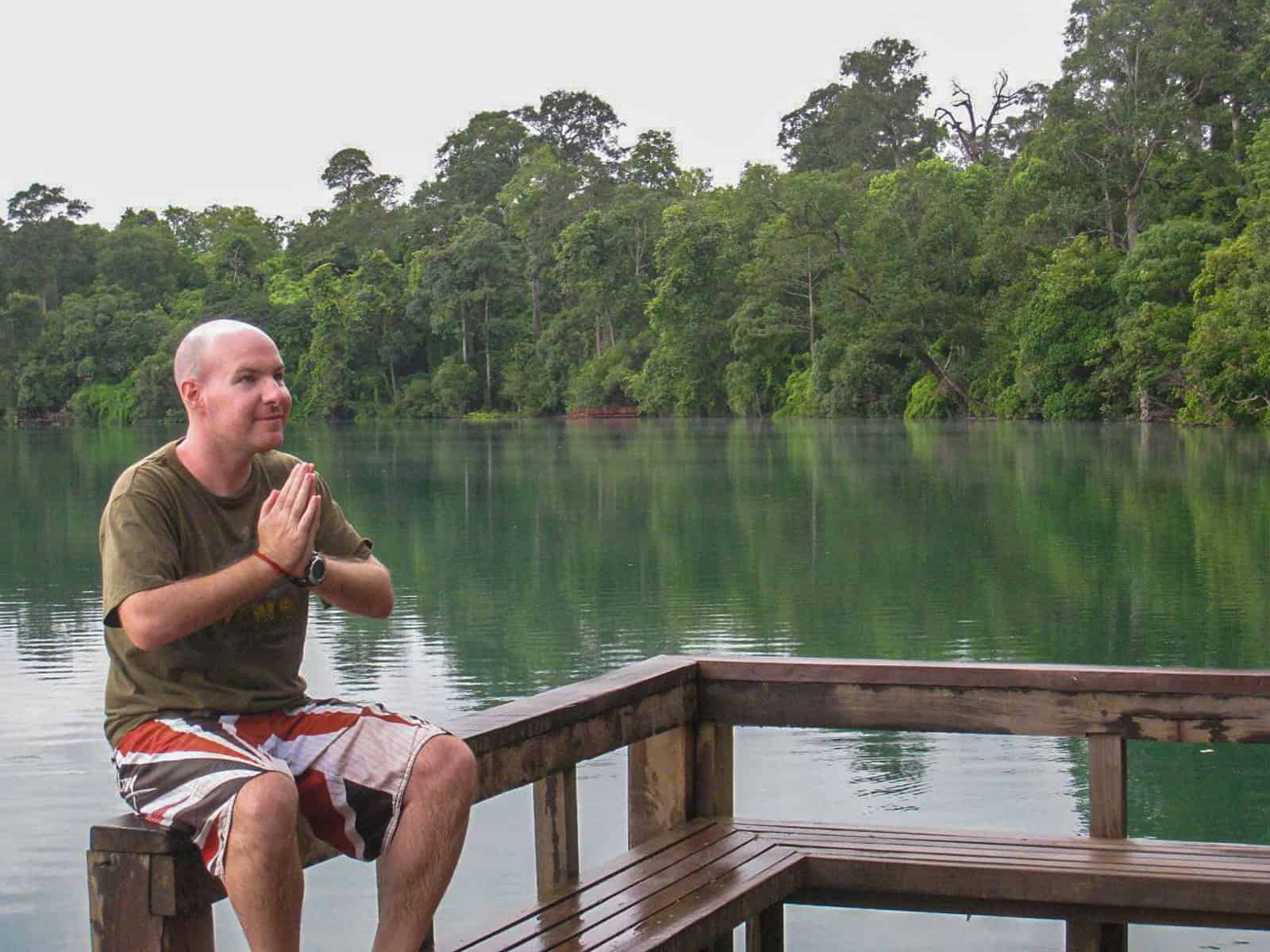During my trip around the world, I was excited to backpack Cambodia in Southeast Asia for many reasons.
Ancient temple ruins set the scene for Hollywood movies, villages that float on water, and killing fields where the worst of humanity was witnessed.
Cambodia, a primarily rural country, is full of complexity.
In this post, I'll share five reasons to visit the country, plus the best places to add to your Cambodia itinerary, all of which I hope will inspire you to spend time here, too.
Table of Contents
Getting to Know Cambodia

Historical Influences
Over the last 2,000 years, Cambodia has been heavily influenced by Chinese and Indian culture, acting as a conduit to spread those influences to Thailand, Laos, and Vietnam.
One such influence has been Buddhism, written into the country's constitution and practiced by 97% of the population.
Perhaps this is part of why Cambodian people are known to be so friendly.
As a practitioner of Buddhism, I loved being immersed in a country with such a rich tradition.
Today, there are more than 4,000 monastery temples across the country.
In the 12th Century, Cambodia's Khmer Empire was the largest in Southeast Asia.
Their capital was Angkor, and it was during this time that Angkor Wat and Bayon were constructed.
Fast forward to the mid-19th Century, and Cambodia reached out to France for protection from Siam (now Thailand).
As a result, Cambodia was a French colony from 1857 to 1953.
The French language was taught in school. However, once the Khmer Rouge began waging their genocide in the mid-1970s, most educated, multilingual Cambodians were killed.
Modern-day Cambodia has benefited from its growth as a premier travel destination in the last 20 years.
The influx of travelers, expats, and businesses has also had an impact.

Learn About Genocide
When the Khmer Rouge took power in 1975, led by Pol Pot, millions of Cambodians were marched into the countryside to perform forced agricultural labor.
The educated class was tortured and killed en masse. Even babies, the most innocent form of human life, were brutally murdered by the regime.
An estimated two to three million Cambodian people died during the genocide or approximately 30% of the country's population.
For this reason, you may not see many elderly Cambodians (over the age of 60), however as time passes, this effect is slowly fading.
I realize recommending visits to the Tuol Sleng Prison (aka S-21) and the Killing Fields at Choeung Ek, both in Phnom Penh, sounds like dark tourism.
By all accounts, it is. There's nothing darker and few things crueler than genocide.
But, it's critical for us as world travelers to educate ourselves on these atrocities so we can support efforts to prevent them in the future.

The People
A defining experience from my backpacking trip to Cambodia was spending time with Phi-Lay, a motorbike guide in Battambang.
I'd hired him to take me around the rural villages. We spent the day driving through green fields of rice and visiting colorful Buddhist temples.
We also made a somber stop at the Killing Caves (a genocide memorial).
Afterward, as I was eating lunch at a nearby restaurant, Phi-Lay shared his experience living through the genocide.
I hadn't asked out of respect; however, I appreciated his willingness to share.
When we returned to Battambang at the end of the day, he invited me to dinner at his house with his wife and eight children. I said yes.
That night, I dined on curry-stuffed frogs at Phi-Lay's home, and afterward, watched Bollywood DVDs together with his family.
I enjoyed the day so much, I hired him for the next day, too. And once again, he invited me over to dinner!
A few days later, after I arrived in Phnom Penh, I mailed Phi-Lay a few of the pictures I'd taken of him and his family. I hope he enjoyed them as much as I did.

Wonderful Weather
Cambodia is in the northern hemisphere, and given its proximity to the equator, has fairly consistent temperatures year-round.
You can expect anywhere from 70 F for a low to 95 F for a high (21 to 35 C). Perfect for wearing a t-shirt and shorts day or night.
More importantly, there's a wet and a dry season, which is good to know before choosing dates to backpack Cambodia.
The cool, dry season is from October to April, and the wet season runs from May to September.
I visited during the first few weeks of September and did experience some rain, but it wasn't enough to cause any issues.
However, I did run into a delay when my minivan to rural northeast Cambodia had to detour around a very muddy, almost impassible stretch of road.
So, if you intend to get off the beaten path and spend more time in the countryside, perhaps it's best to go in the dry season.

Natural Landscapes
Why you may wonder, was I going to Ban Lung in northeast Cambodia?
I'd learned there was a volcano crater lake (Boeng Yeak Laom) you could swim in, and that sounded swell to me at the time!
It was a heck of a long day in a crowded minivan to get there, but the journey was worth it.
The lake was completely undeveloped, except for a small wooden dock from which to stare out at the scenery or go for a swim. I hope that's still the case.
To get there, I'd hired a motorbike guide who also took me to three local waterfalls, including one large one you could stand under without getting wet.
One thing I missed while backpacking in Cambodia was the beaches, specifically those around Sihanoukville.
Lonely Beach on Koh Rong and Otes Beach were highlighted as two of the best beaches in Southeast Asia by Thrillist.
The list could go on. The 18 days I spent backpacking in Cambodia were a truly wonderful experience I still savor years later.
_____
This story is brought to you in partnership with Karambol.
Dave is the Founder and Editor in Chief of Go Backpacking and Feastio. He's been to 66 countries and lived in Colombia and Peru. Read the full story of how he became a travel blogger.
Planning a trip? Go Backpacking recommends:
- G Adventures for small group tours.
- Hostelworld for booking hostels.
